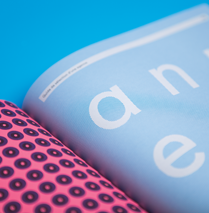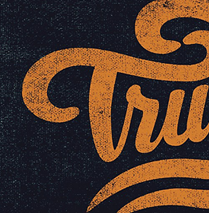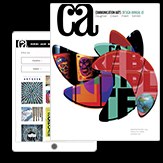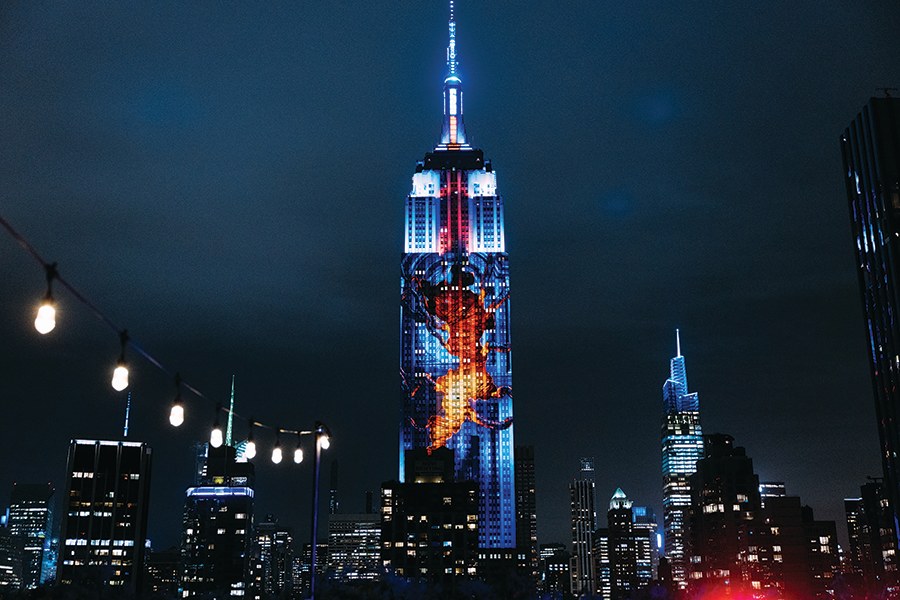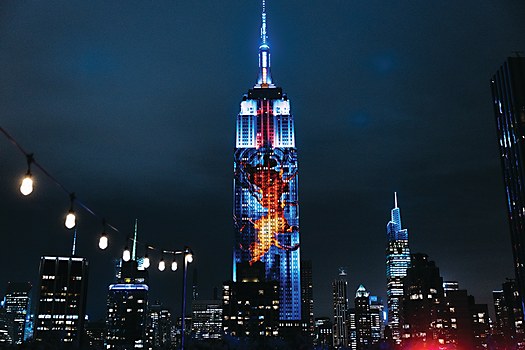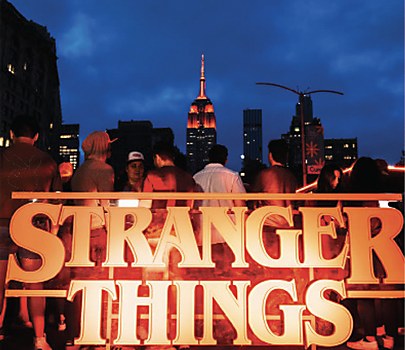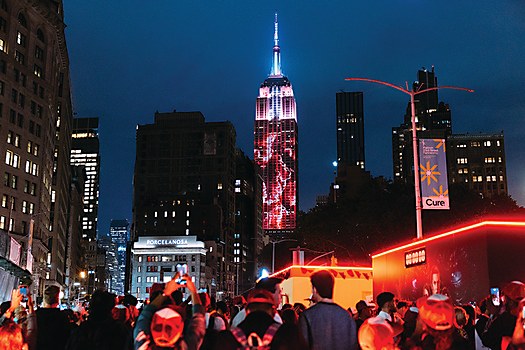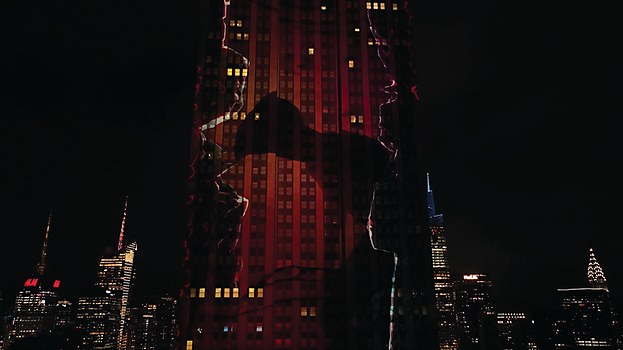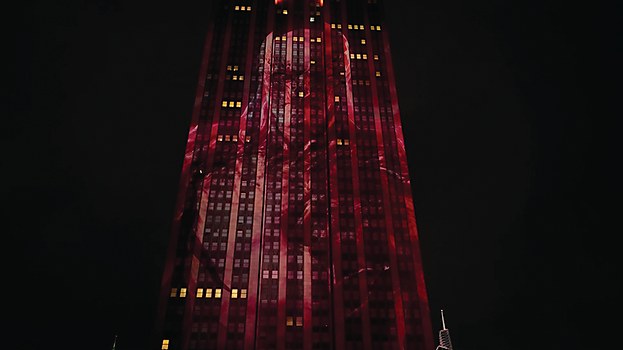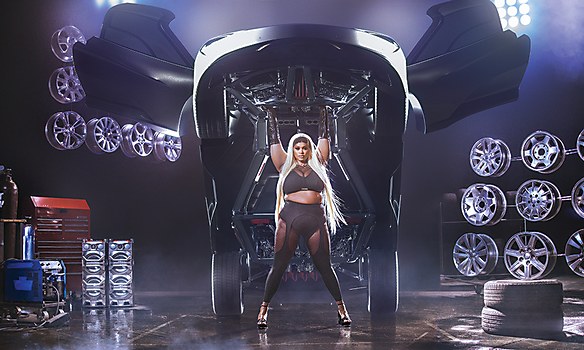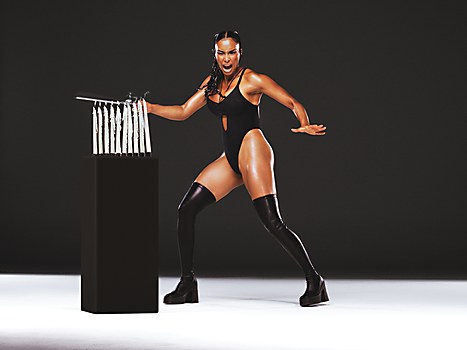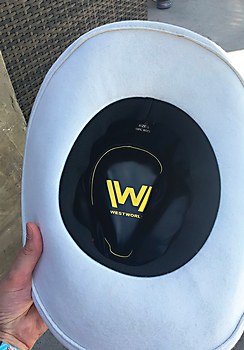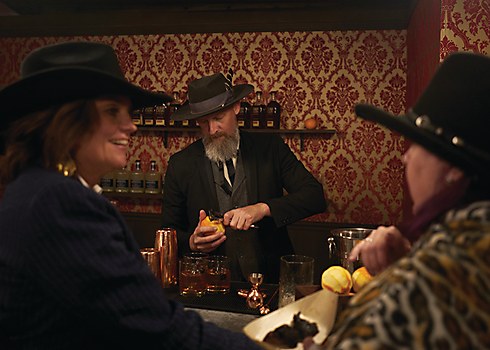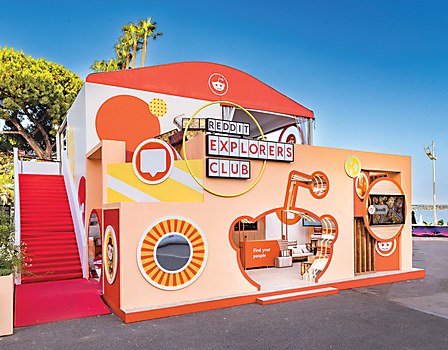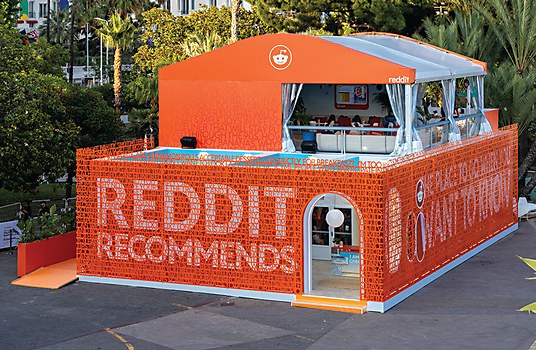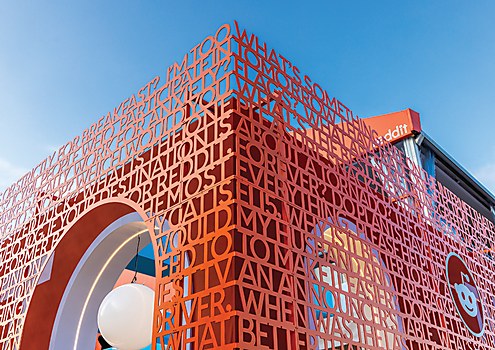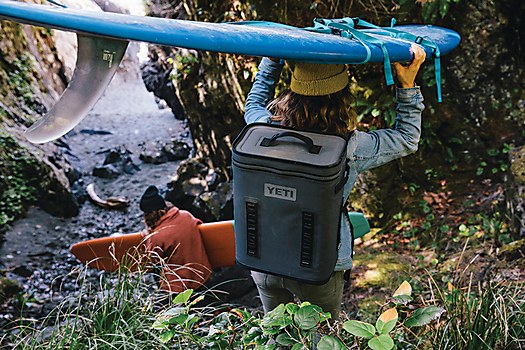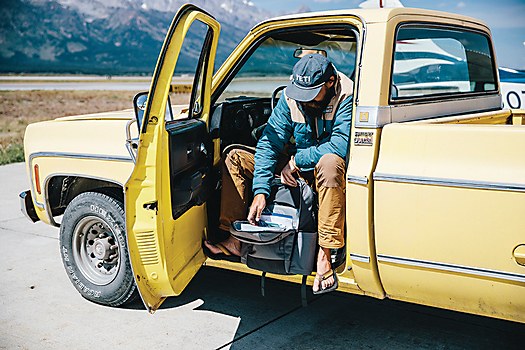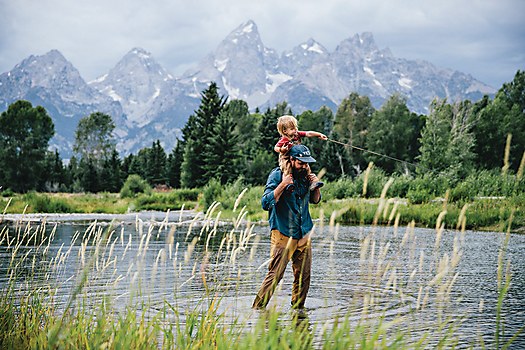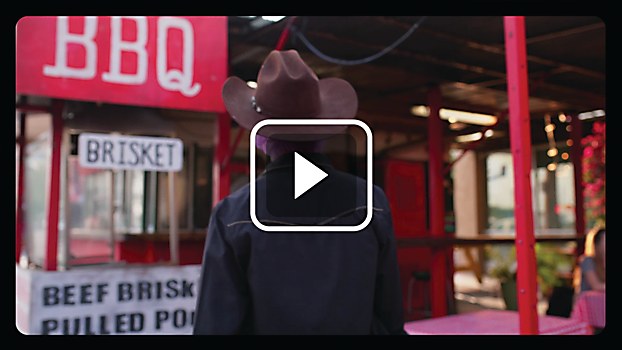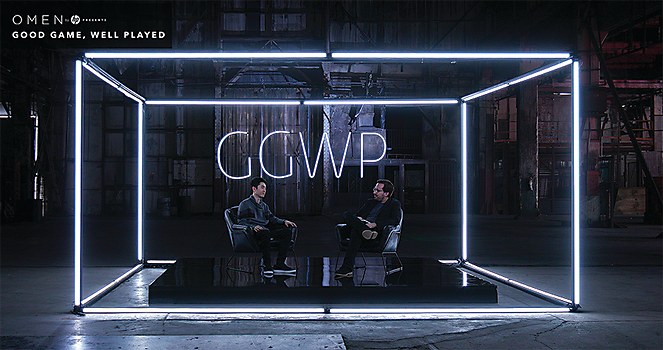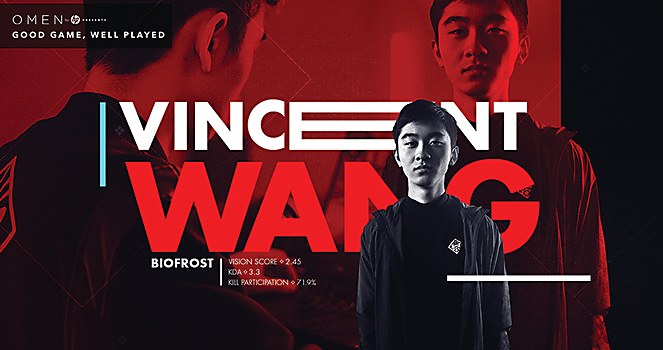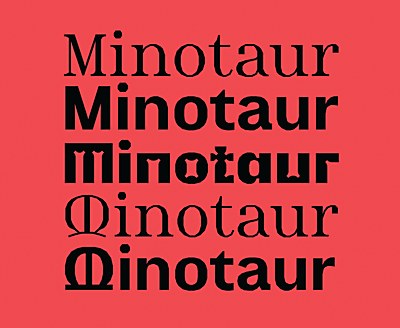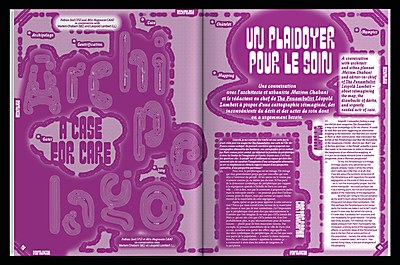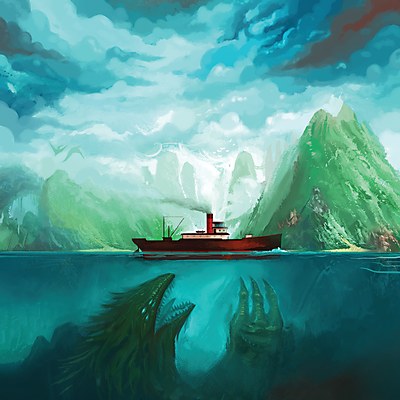In Manhattan on the night of May 26, 2022, a larger-than-life experience took place. If you had been walking up East 34th Street approaching 5th Avenue, you’d be expecting a typical scene around one of New York’s most famous landmarks. Instead, you would have been greeted with a first-of-its-kind immersive spectacle, designed to create an extraordinary empire state of mind. On that night, a mind-blowing light, sound and projection extravaganza took place across the side of the Empire State Building, transfixing thousands in attendance and millions more viewing online.
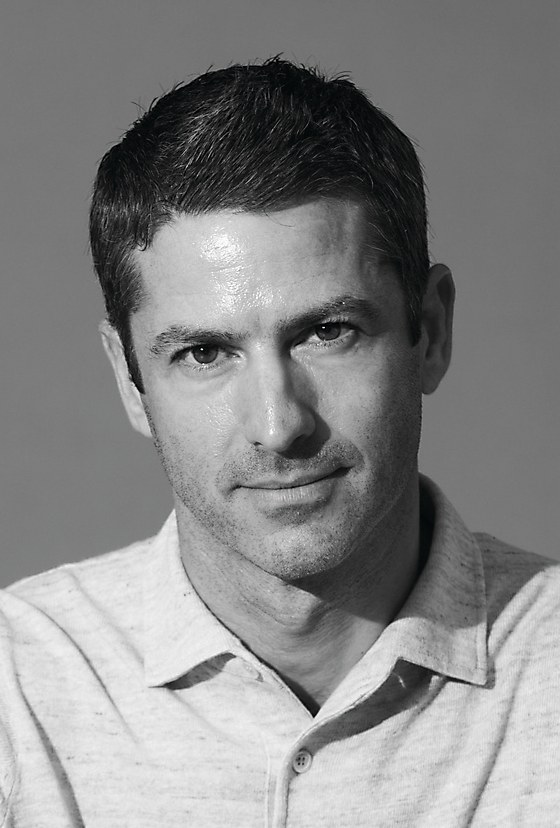
Giant Spoon.
Created to promote the fourth season of Stranger Things on Netflix, the experience struck awe in viewers as they watched a crack seemingly appear on the side of the building, revealing a mesmerizing narrative through the Upside Down world from the show. It took place over the facade of the entire building and lasted for two hours. The scene was stunning: with helicopters hovering overhead, a world-renowned building was transformed into a fascinating projection surface, a spectacle so massive it elevated the Big Apple to another level.
As immense as it all was, the agency that helped create it, Giant Spoon, was no stranger to never-been-done-before moments. Those familiar with its arsenal of work have actually come to expect it from them. In the early 2000s, Giant Spoon’s cofounders Trevor Guthrie, Jon Haber and Marc Simons were working in big agencies, trying to uncover solutions to a new media landscape. Haber remembers the moment early in his career when people were freaking out over the industry’s future due to TiVo, an incredibly popular new invention. “Everyone was panicking, thinking no one [would] watch a commercial ever again,” he says. He helped build a skunk-works operation at his agency to figure out ways of expanding how people experience brands. It was an early breeding ground for thinking about marketing and culture as a priority, not just an add on.
Browse Projects
Over the years, Guthrie, Haber and Simons developed an itch to start their own shop. Eventually, the three jumped ship with the goal to help clients think more about evolving their brands into universes that people could exist in and engage with. “We told clients we were going to understand their brand, culture and media platforms, then come up with ideas to tell their story, with no preconceived notions of the format and type of ideas those would be,” says Haber.
The trio had a school of thought; now they needed a name. “What we identified is that we like to stir shit up,” Haber says. “And what do you need to stir shit up in a big, memorable way? A giant spoon, of course.” It also helped that it made the agency sound a little weird and different to match its fresh approach to branding. A few big brands that Guthrie, Haber and Simons had relationships with bet on Giant Spoon—most notably, General Electric (GE), HP and NBC. “There were just a few of us, and we didn’t have offices yet, but we helped GE build a custom integration when Jimmy Fallon took over the Tonight Show,” Haber recalls. “Working with the show’s producers and writers, we built out a social ecosystem, which then became a recurring segment on the show.” Pulling off such a huge effort was a wow moment for the three.
In those days, they also recognized Giant Spoon’s place in a client’s agency ecosystem as the small, wildcard shop. It served a role of delivering unique, sometimes crazy ideas that clients weren’t getting from their other partners. The three even coined a clever term for their version of blue-sky concepts: Spoonshots. “Now that we’ve grown to our current size, we’re still that wildcard,” Haber explains, “but we also serve as the central steward of a brand, thinking holistically about everything it needs to put into the world.” The agency’s goal now is to weave it all together. “Spoonshots are still part of our DNA because they differentiate us,” Haber continues, “but now we focus on the entire media plan built around them.”
An example of a Spoonshot that drove the agency’s early fame was the Westworld experience it built for HBO outside of South by Southwest. A meticulously detailed and managed re-creation of the show’s theme park designed to immerse attendees into its world, the activation received global attention and tons of PR. Haber likens that experience to building a plane while flying it. “It took a lot of people putting their necks out, wondering if we could really make it,” he says.
Giant Spoon has never been afraid to take smart risks, and it has grown in the process. The team currently numbers about 120 people across Los Angeles and New York City. “We’re really like three or four small agencies that together make up one midsize agency,” Haber says. “We’re experiential, we’re a creative agency, we’re a media agency—and we often get tapped for strategy-only projects.”
The agency just celebrated its ten-year anniversary and boasts many of the same clients that were there at the beginning. Those relationships have changed over time, but the longevity and trust it has built up has given it larger seats at the table for bigger projects. It’s enabled Giant Spoon to build infrastructure and expand into doing more things for smaller marketers too. “We have two sweet spots,” Haber explains. “One is helping drive innovation for a large Fortune 100 brand while bringing it new, exciting ideas. The second is being a lead agency that’s running the full suite of a brand for a midsize marketer.”
Let’s get back to that Empire State Building takeover-palooza. Did I mention that the event also included an equally jaw-dropping projection lightshow at fourteen other landmark sites across the world? Well, here’s the important question: How did a colossal operation like that come to fruition? It started with a brief asking to make the launch of the fourth season of Stranger Things into the biggest deal in entertainment across the globe. (Talk about a pretty sweet brief.) “Our creatives had been keeping an eye on the Empire State Building and its facade’s new lighting capabilities,” details Haber. “When it came to thinking larger than life, that location jumped to top of mind.” Giant Spoon wanted to completely stop New York in its tracks, so it also planned to throw rooftop influencer parties, to film it all with helicopters and drones, and to release a clever teaser promotion that secretly dropped mysterious latitude and longitude coordinates on social media.
They agency didn’t execute the other projections around the world, but its narrative playbook and design scheme was used by Netflix’s regional marketers, giving everything an interconnected feel. “We love to do experiential where it’s so much more of an ecosystem than just the projection itself,” Haber says. “We build things with a narrative structure and think through how it extends to social content, so that it feels like one story.”
When Giant Spoon isn’t doing groundbreaking executions on the sides of landmark buildings, it’s doing one-of-a-kind work for other clients too. When GE announced in 2021 that it was splitting into three smaller companies, Giant Spoon helped tell this story by creating the first-ever complete ad takeover of the New York Times. Haber details the genesis of the idea as: “What if we made every ad of an entire issue focused on GE and its new business setup? Each ad would be a custom unit that told different stories around the theme of focus.” The New York Times had never done that for an advertiser in its almost-175 years of publishing. It was a unique example of bringing together a medium, culture, legacy and audience to tell a brand’s story in a new way.
HP is another long-running client that has benefitted from many of Giant Spoon’s memorable campaigns. One highlight was “The Wolf,” a campaign centered around a hacker played by Christian Slater. Several episodes featured him hacking into companies through their poorly secured printers, which then promoted the cybersecurity efforts of HP. The film series won at Cannes and received an enormous amount of press.
Beyond traditional ad awards, the agency has garnered a lot of hardware from festivals that reach beyond advertising. It won a best branded content award at the Tribeca Film Festival and appeared on Fast Company’s Most Innovative Companies list in 2023. These awards showcase how its work goes beyond ads, into entertainment and culture. Essentially, Giant Spoon’s early vision has come to life.
Its body of work showcases a wide creative range, wider than I can fit within the word count limit of this article. Here are a few more highlights you should research: There’s a bold, TV-driven, 360 campaign for Rihanna’s lingerie brand Savage X Fenty. Also, it created “Unlocked,” the first branded short film on Peacock for HP that follows data scientists trying to track down a rare plant to cure an epidemic caused by a neurological disease. The agency has made podcasts for clients that became number one overall on iTunes. It even created “What’s Cooking Tonight?,” a puppet talk show teaser starring Jennifer Garner and Jack Black to promote Waffles + Mochi, Michelle Obama’s educational Netflix series on food—yes, that’s real. Seriously, look it up.
Haber sums up Giant Spoon’s overarching vision like this: “We have this tenet that being boring is bad for business. If you want to be memorable, have brand favorability and [foster] a relationship with your customers, you can’t be boring. Our mantra to brands is to come here if you want to do something different and make your creative feel more like entertainment that can become a part of culture.” Its clients know one thing for sure: if you want to stir shit up in an unforgettable way, grab a Giant Spoon. ca



